-
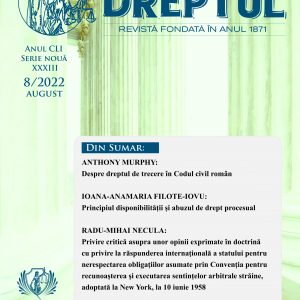 Globalization, the changing concepts of the family definition and the emergence of new medical techniques for conceiving children have led to the emergence of substitution maternity and the issue of inheritance rights for children born of such a procedure. At international level, no comparable moral or legal basis can be identified in this area. The creation of a common legal framework or the advancement of a large-scale international unification of substantive law or rules on the recognition of the effects of foreign laws seems to be a distant goal to achieve. The issue of the inheritance rights of children born of surrogacy motherhood is a very complex one and currently without legislative protection. On European Union level, European Regulation 650/2012 has been in force since 2012, but there are no provisions on the situation of inheritance rights deriving from a surrogacy contract. The study aims to analyse the general concepts recognised in international, European and national law with regard to the creation of a legal framework as structured as possible for the protection of the inheritance rights of children born of substitution maternity, and to understand how this medical practice works. Another objective will be to analyse the decisions of the European Court of Human Rights, the decisions of the Court of Justice of the European Union and the national courts decisions, in order to find solutions on how to protect inheritance rights in such a situation.
Globalization, the changing concepts of the family definition and the emergence of new medical techniques for conceiving children have led to the emergence of substitution maternity and the issue of inheritance rights for children born of such a procedure. At international level, no comparable moral or legal basis can be identified in this area. The creation of a common legal framework or the advancement of a large-scale international unification of substantive law or rules on the recognition of the effects of foreign laws seems to be a distant goal to achieve. The issue of the inheritance rights of children born of surrogacy motherhood is a very complex one and currently without legislative protection. On European Union level, European Regulation 650/2012 has been in force since 2012, but there are no provisions on the situation of inheritance rights deriving from a surrogacy contract. The study aims to analyse the general concepts recognised in international, European and national law with regard to the creation of a legal framework as structured as possible for the protection of the inheritance rights of children born of substitution maternity, and to understand how this medical practice works. Another objective will be to analyse the decisions of the European Court of Human Rights, the decisions of the Court of Justice of the European Union and the national courts decisions, in order to find solutions on how to protect inheritance rights in such a situation. -
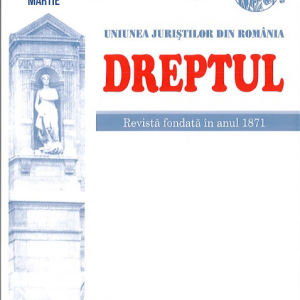 This study examines a series of controversies concerning the operation of the penal clause in certain special situations such as: admissibility of penalties running after the cancellation/resolution of contract if, by assumption, the debt had not been yet fully or partly liquidated by the debtor; the issue of the possibility of reducing the amount of „clearly excessive” penalties by the court, if these penalties are „clearly excessive” [Article 1541 (1) b) of the new Civil Code]; the admissibility of the plurality of various clauses that provide penalties and others.
This study examines a series of controversies concerning the operation of the penal clause in certain special situations such as: admissibility of penalties running after the cancellation/resolution of contract if, by assumption, the debt had not been yet fully or partly liquidated by the debtor; the issue of the possibility of reducing the amount of „clearly excessive” penalties by the court, if these penalties are „clearly excessive” [Article 1541 (1) b) of the new Civil Code]; the admissibility of the plurality of various clauses that provide penalties and others. -
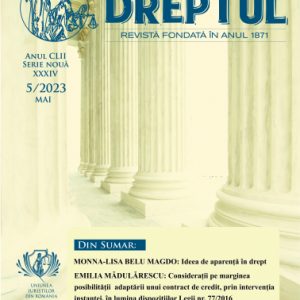
-
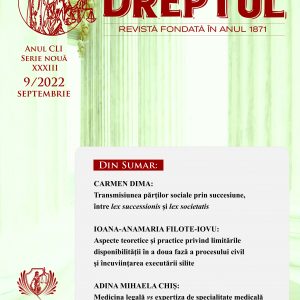 In practical situations with medical implications, the nature of the expertise must be established as a matter of priority. This matter involves a series of discussions on the differences between forensic expertise and specialized medical expertise. Nowadays, forensic expertise continues to be approached from an obsolete perspective, without detecting its limits in medical or legal matters. Highlighting the differences between the two categories of expertise and the shortcomings of the relevant legislation has major practical consequences. The utility of this study lies in terms of analyzing the legal significance of respecting the medical specialty and the object of the medical expertise – a new category of expertise, which seems to be of no practical use, despite its great importance. This respects the principle of medical specialty and takes into account also the level of development of medical science in the field of expertise. Adherence to incidental medical guidelines or protocols can be verified only by a specialized medical expertise, the only one able to analyze the compliance of the medical conduct. Instead, the limits of forensic expertise are revealed by its object, which is just another expertise in medical law, without encompassing the entire medical or legal matter, in a single specialty. The two types of work must be clearly delimited in judicial practice, for the full clarification of legal situations with medical implications, regardless of their nature.
In practical situations with medical implications, the nature of the expertise must be established as a matter of priority. This matter involves a series of discussions on the differences between forensic expertise and specialized medical expertise. Nowadays, forensic expertise continues to be approached from an obsolete perspective, without detecting its limits in medical or legal matters. Highlighting the differences between the two categories of expertise and the shortcomings of the relevant legislation has major practical consequences. The utility of this study lies in terms of analyzing the legal significance of respecting the medical specialty and the object of the medical expertise – a new category of expertise, which seems to be of no practical use, despite its great importance. This respects the principle of medical specialty and takes into account also the level of development of medical science in the field of expertise. Adherence to incidental medical guidelines or protocols can be verified only by a specialized medical expertise, the only one able to analyze the compliance of the medical conduct. Instead, the limits of forensic expertise are revealed by its object, which is just another expertise in medical law, without encompassing the entire medical or legal matter, in a single specialty. The two types of work must be clearly delimited in judicial practice, for the full clarification of legal situations with medical implications, regardless of their nature. -
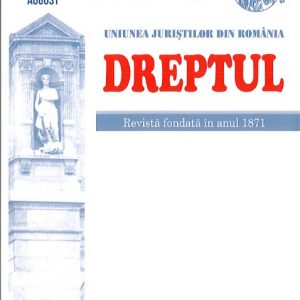 This study deals with the mediation in the criminal side of the trial. The legislator has limited the scope of application of the mediation in the criminal side of the trial to the offences in respect of which the criminal action is set in motion upon the prior complaint of the injured party and is extinguished by the withdrawal of the prior complaint, on the one hand, and to the offences in respect of which the criminal action, although set in motion ex officio, is extinguished by the reconciliation between the injured party and the perpetrator. The mediation procedure in the criminal side of the trial is marked by three stages: the pre-mediation stage, the stage of actual mediation and the stage of closing the mediation. The pre-mediation stage is marked by an initial moment, when the conflicting parties present themselves to the mediator, and by a final moment, when mediation is either accepted or refused. The stage of actual mediation takes place in the form of some mediation sessions and it concentrates the most important activity of the mediation procedure. After the mediation takes place, the procedure is closed by concluding an agreement between the parties as a result of the settlement of the conflict, by the mediator’s finding of the mediation failure or by the submission of the mediation contract by one of the parties. Within the mediation in the criminal side of the trial, three legal acts are drawn up: the mediation contract, the minutes of closing the mediation and the mediation agreement. The mediation contract ends at the final moment of the preliminary stage of the procedure, when the conflicting parties appear before the mediator. Upon closing the mediation procedure, the mediator draws up a minutes. It is mandatory to draw up the minutes, regardless of the modality by which the mediation procedure is closed. If the mediation is closed by settling the conflict between the parties, the minutes of closing the mediation procedure is doubled by a mediation agreement. In criminal matters, the mediation agreement in writing is mandatory.
This study deals with the mediation in the criminal side of the trial. The legislator has limited the scope of application of the mediation in the criminal side of the trial to the offences in respect of which the criminal action is set in motion upon the prior complaint of the injured party and is extinguished by the withdrawal of the prior complaint, on the one hand, and to the offences in respect of which the criminal action, although set in motion ex officio, is extinguished by the reconciliation between the injured party and the perpetrator. The mediation procedure in the criminal side of the trial is marked by three stages: the pre-mediation stage, the stage of actual mediation and the stage of closing the mediation. The pre-mediation stage is marked by an initial moment, when the conflicting parties present themselves to the mediator, and by a final moment, when mediation is either accepted or refused. The stage of actual mediation takes place in the form of some mediation sessions and it concentrates the most important activity of the mediation procedure. After the mediation takes place, the procedure is closed by concluding an agreement between the parties as a result of the settlement of the conflict, by the mediator’s finding of the mediation failure or by the submission of the mediation contract by one of the parties. Within the mediation in the criminal side of the trial, three legal acts are drawn up: the mediation contract, the minutes of closing the mediation and the mediation agreement. The mediation contract ends at the final moment of the preliminary stage of the procedure, when the conflicting parties appear before the mediator. Upon closing the mediation procedure, the mediator draws up a minutes. It is mandatory to draw up the minutes, regardless of the modality by which the mediation procedure is closed. If the mediation is closed by settling the conflict between the parties, the minutes of closing the mediation procedure is doubled by a mediation agreement. In criminal matters, the mediation agreement in writing is mandatory. -
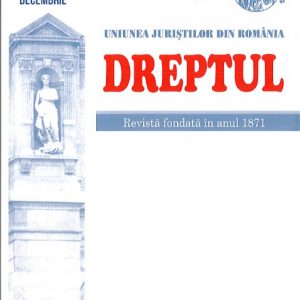 The debate over the future of the juveniles’ court and the juvenile justice system has been between proponents of a retributive philosophy and advocates of the traditional individual treatment mission. Both punitive approaches and those focused solely on treatment have failed to satisfy basic needs of crime victims, the community and offenders themselves. Neither offers hope for preserving a separate justice system for juveniles. This document outlines an alternative philosophy, restorative justice, and a new mission, the balanced approach, which require that juvenile justice system devotes attention to making amends to victim and the community, increasing offender competencies, and protecting the public, through process in which offenders, victims and the communities are all active participants.
The debate over the future of the juveniles’ court and the juvenile justice system has been between proponents of a retributive philosophy and advocates of the traditional individual treatment mission. Both punitive approaches and those focused solely on treatment have failed to satisfy basic needs of crime victims, the community and offenders themselves. Neither offers hope for preserving a separate justice system for juveniles. This document outlines an alternative philosophy, restorative justice, and a new mission, the balanced approach, which require that juvenile justice system devotes attention to making amends to victim and the community, increasing offender competencies, and protecting the public, through process in which offenders, victims and the communities are all active participants. -
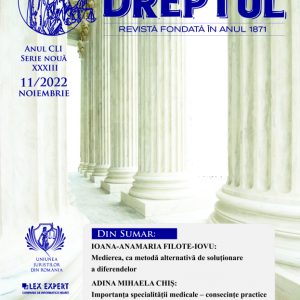 In this study, the author aims to present the relevant aspects of mediation, as an alternative means of resolving disputes that the parties may use by virtue of availability, highlighting both its advantages and the reasons why the law governing it has become increasingly less applied. In addition, there are situations in which the courts have been called to approve mediation agreements, but also the author’s opinion regarding the need to use the optional procedure, except for disputes in the field of family law, which should be analyzed by judges, who are the most able to pronounce solutions that correspond most faithfully to the best interests of the child.
In this study, the author aims to present the relevant aspects of mediation, as an alternative means of resolving disputes that the parties may use by virtue of availability, highlighting both its advantages and the reasons why the law governing it has become increasingly less applied. In addition, there are situations in which the courts have been called to approve mediation agreements, but also the author’s opinion regarding the need to use the optional procedure, except for disputes in the field of family law, which should be analyzed by judges, who are the most able to pronounce solutions that correspond most faithfully to the best interests of the child. -
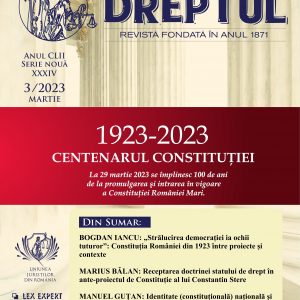
-
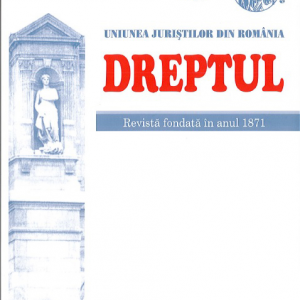 Potrivit art. 457 alin. (1) C.pr.civ., hotărârea judecătorească este supusă numai căilor de atac prevăzute de lege, în condițiile și termenele stabilite de aceasta, indiferent de mențiunile din dispozitivul ei. De asemenea, conform prevederilor art. 460 alin. (3) C.pr.civ., în cazul în care prin aceeași hotărâre au fost soluționate mai multe cereri principale sau incidentale, dintre care unele sunt supuse apelului, iar altele recursului, hotărârea în întregul ei este supusă apelului.
Potrivit art. 457 alin. (1) C.pr.civ., hotărârea judecătorească este supusă numai căilor de atac prevăzute de lege, în condițiile și termenele stabilite de aceasta, indiferent de mențiunile din dispozitivul ei. De asemenea, conform prevederilor art. 460 alin. (3) C.pr.civ., în cazul în care prin aceeași hotărâre au fost soluționate mai multe cereri principale sau incidentale, dintre care unele sunt supuse apelului, iar altele recursului, hotărârea în întregul ei este supusă apelului. -
 Seen by Aristotle as a pure ornamental rhetorical figure, the metaphor is no longer intended in the 21th century to embellish poetical expression, but to generate new forms of access to knowledge, leading from a paradigm of expressive semantic regime to a semantic cognitive regime. It is considered today that the metaphor is not only related to the literary style, but to the whole of human sciences. Even the definition of the right has fuelled an abundant literature that is lost in the darkness of times, and which seems to have failed to reach a right conclusion, as lawyers still seek a definition for their concept of law. This is because the meaning of law, its force and its reason to be keep an irreducible part of mystery, a mystery derived, in part, from the fact that the right term is a metaphor and, like any metaphor, linguistically materializes the cognitive processes of communication and provides, by analogy, an imaginative support that binds it to an already familiar conceptual circuit.
Seen by Aristotle as a pure ornamental rhetorical figure, the metaphor is no longer intended in the 21th century to embellish poetical expression, but to generate new forms of access to knowledge, leading from a paradigm of expressive semantic regime to a semantic cognitive regime. It is considered today that the metaphor is not only related to the literary style, but to the whole of human sciences. Even the definition of the right has fuelled an abundant literature that is lost in the darkness of times, and which seems to have failed to reach a right conclusion, as lawyers still seek a definition for their concept of law. This is because the meaning of law, its force and its reason to be keep an irreducible part of mystery, a mystery derived, in part, from the fact that the right term is a metaphor and, like any metaphor, linguistically materializes the cognitive processes of communication and provides, by analogy, an imaginative support that binds it to an already familiar conceptual circuit. -
 Property (or ownership), seen as a subjective right, is the principle according to which we legally determine who can own what, how and to what extent. The legal conception of property rights is reflected in the economy, and the economy, by the force of its oftentimes ideologically driven mandates, spills over into the realm of the Law, molding our understanding of property to the very same extent that this understanding molds, constrains and defines the economy itself. The right of property, as a legal category, is not fixed and unchanging. On the contrary, property lends itself to a multiplicity of conceptual frameworks, sometimes at odds with one another. The modern understanding of property, however, is deeply indebted to Roman law. The Roman spirit, mercantile par excellence, is embedded into the innermost recesses of our contemporary theories of property rights. All this because the Roman legacy includes a perfectly flexible conceptual toolkit, eminently adapted to the whims of the market. The analysis of all of this constitutes the object of this study.
Property (or ownership), seen as a subjective right, is the principle according to which we legally determine who can own what, how and to what extent. The legal conception of property rights is reflected in the economy, and the economy, by the force of its oftentimes ideologically driven mandates, spills over into the realm of the Law, molding our understanding of property to the very same extent that this understanding molds, constrains and defines the economy itself. The right of property, as a legal category, is not fixed and unchanging. On the contrary, property lends itself to a multiplicity of conceptual frameworks, sometimes at odds with one another. The modern understanding of property, however, is deeply indebted to Roman law. The Roman spirit, mercantile par excellence, is embedded into the innermost recesses of our contemporary theories of property rights. All this because the Roman legacy includes a perfectly flexible conceptual toolkit, eminently adapted to the whims of the market. The analysis of all of this constitutes the object of this study. -
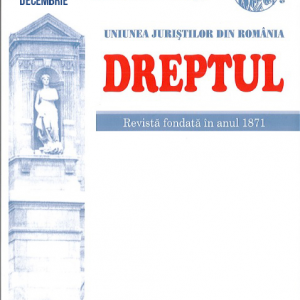 In this study the author makes a comprehensive analysis of cyber crime and how to fight, prevent and investigate this. The analytical approach is based on the definition of cyber crime, of its characteristics, and finally on the identification of the specific means of evidence that are used in the criminal investigations
In this study the author makes a comprehensive analysis of cyber crime and how to fight, prevent and investigate this. The analytical approach is based on the definition of cyber crime, of its characteristics, and finally on the identification of the specific means of evidence that are used in the criminal investigations
